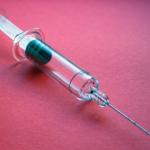
The Needle and the Damage Done
17 July 2017, 6:00AM
NEIL AVERIS
As a sports doctor, I often use steroid injections to settle persistent injuries. Steroid or cortisone injections can work dramatically to fix injuries when other treatments have failed, but need to be used with caution.
Steroid injections still have a dodgy reputation which comes from overuse and inappropriate use, especially with professional athletes in the 70s and 80s. Often, steroid injections would have been used repeatedly to settle symptoms; say in an unstable knee. This would allow the athlete to continue to play without attending to the underlying problem, perhaps a knee cruciate ligament rupture that would have required six or more months off sport to recover from surgical repair.
After a season or two of this, the knee would be damaged beyond repair. Now we are wary of the need for repeated steroid injections for most a single injection should do the trick with occasional need for a second, very rarely a third.
Cortisone also was initially used to treat Achilles tendon injuries with dramatic relief of symptoms. However, the pain relief given by the cortisone and perhaps some atrophy caused by the cortisone, led to a series of Achilles ruptures. Cortisone needs to be used carefully and in situations where it will help and not lead to more damage, or just suppress symptoms.
Cortisone works as a powerful anti-inflammatory, suppressing the healing response. How can this help? Surely the inflammatory response is good and certainly the inflammatory response is the natural universal response to both injury and infection.
This inflammation leads to repair by the body’s patch materials, either scar or bone. Often however, the inflammation goes on and on and scar tissue forms in excess and contracts or tightens around the injury.
In many persistent injuries the healing process should have stopped but overhealing has occurred with scar formation and contracture. The result can be a tight or thickened area in a muscle or tendon or a tight restrictive joint capsule.
In both these situations the injury recurs as these tight areas will inevitably re-aggravate or re-tear leading to more inflammation and more over healing.
In this situation the cortisone will be effective, it will stop the inflammation completely or cause some softening of the scar. The effects last a month or two but usually the symptoms will not recur when the cortisone wears off.
Cortisone should never be used as a first treatment. It is appropriate only when the normal healing process has had time to occur and should not be used if there is a risk of further damage.
Cortisone can cause atrophy or wasting of tissue. With overhealing, this is an advantage but it can also cause atrophy of the fat or skin near the injection site, especially for superficial sites like tennis elbow.
Also, as with any injection there is always a risk of infection. This is extremely unlikely but the risk is not zero and potentially serious.
Cortisone is a very powerful treatment. As a sports doctor, I use it frequently and it can dramatically resolve problems that are months or even years old.
It has no place in the acute treatment of injuries or to relieve symptoms where further damage may occur. It is not a banned substance but requires a prior T.U.E. (therapeutic use exemption) in those that may be drug tested.
If your injury needs a cortisone injection, make sure you see a doctor skilled in the use of this potent treatment. Happy training.
